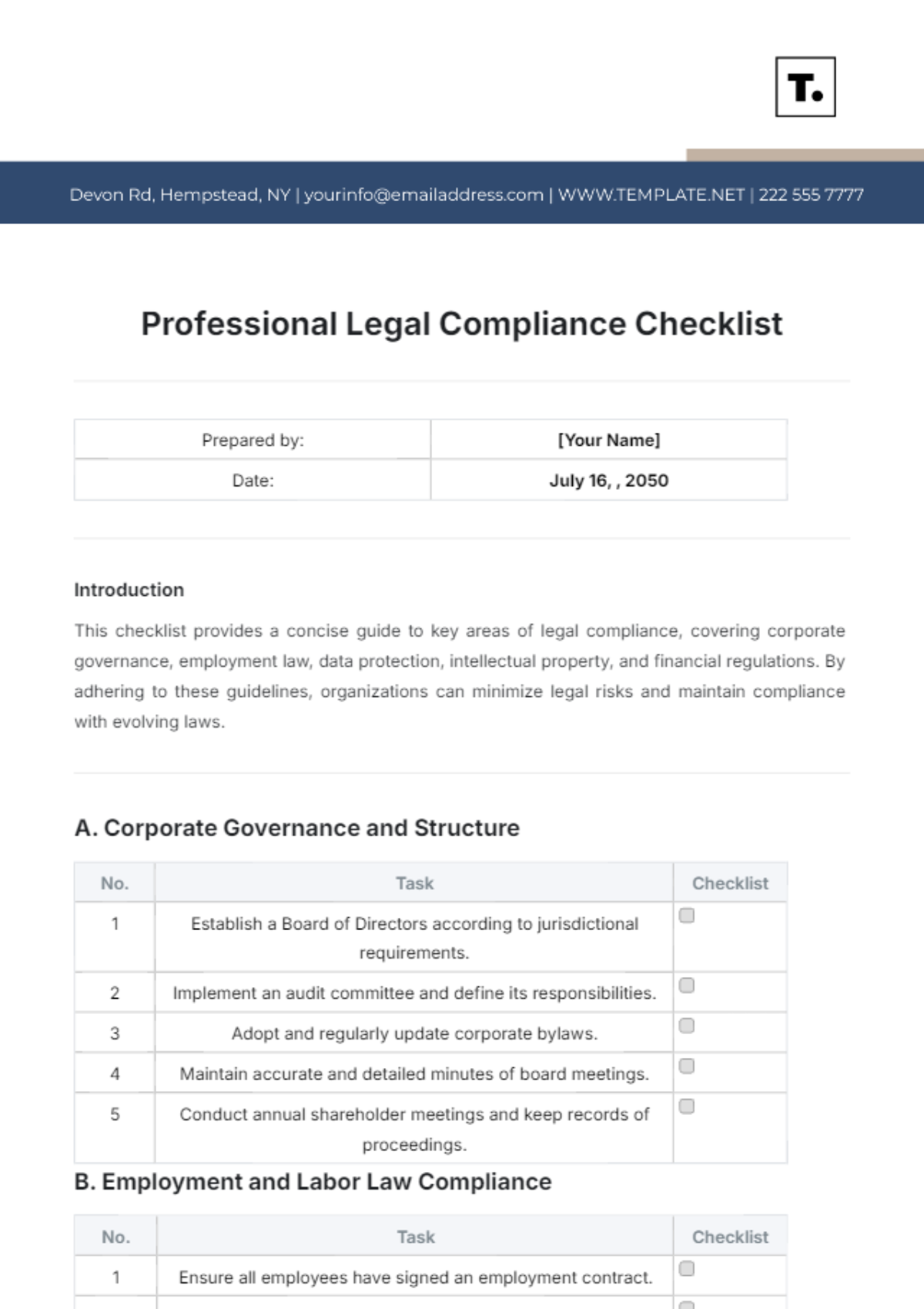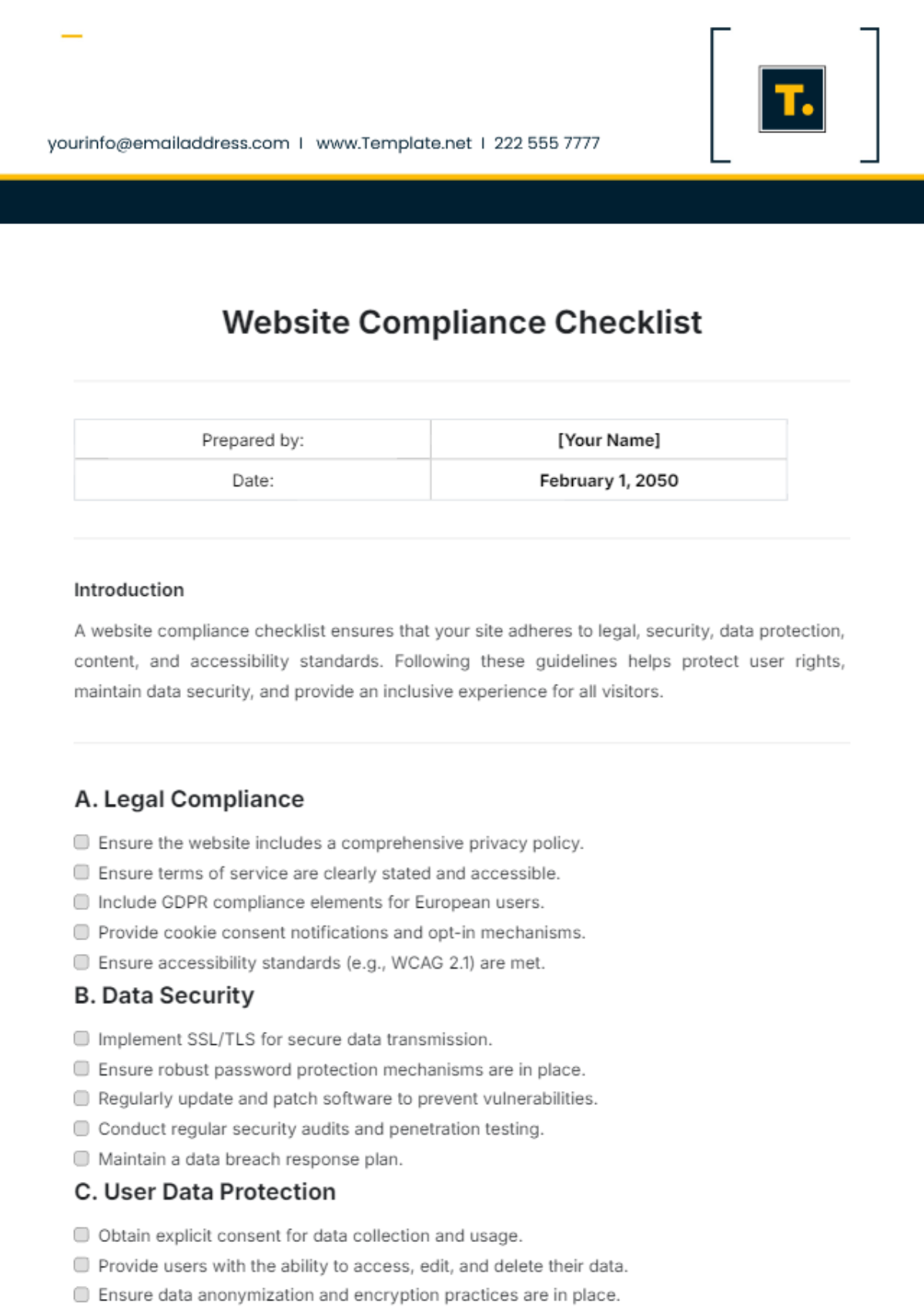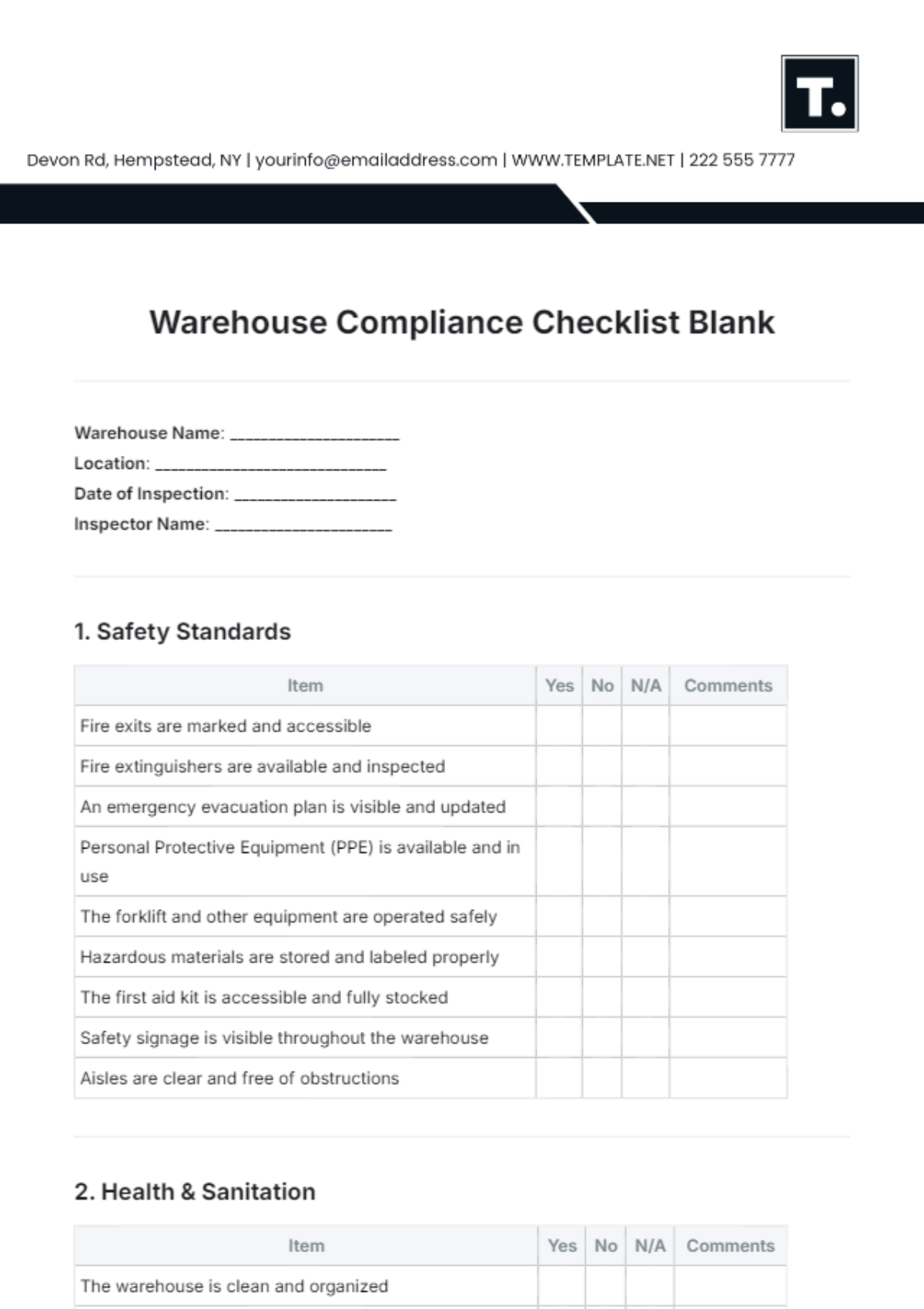Financial Advisor Checklist Outline
Prepared by: [Your Name]
Company: [Your Company Name]
Date: October 2, 2050
I. Initial Client Meeting and Discovery
Personal Information: Collect details about the client’s age, family, dependents, etc.
Goals and Objectives: Understand financial goals (retirement, education, purchasing a home).
Risk Tolerance: Assess how much risk the client is willing to take with investments.
Financial Snapshot: Gather information on income, expenses, debt, savings, and assets.
Legal Documents: Review wills, trusts, power of attorney, etc.
II. Review of Current Financial Situation
Income Analysis: Review salary, business income, and other sources of income.
Expenditure Review: Identify monthly/annual expenses.
Assets Overview: List assets like real estate, investments, retirement funds, etc.
Liabilities Assessment: Analyze current debts, loans, credit card balances, etc.
Insurance Coverage: Review life, health, disability, and long-term care insurance policies.
III. Goal Setting and Prioritization
Short-term Goals: (e.g., saving for a vacation, paying off credit card debt).
Medium-term Goals: (e.g., saving for a home or child’s education).
Long-term Goals: (e.g., retirement, estate planning).
IV. Financial Plan Development
Cash Flow Planning: Create a budget to maximize savings and reduce unnecessary spending.
Investment Strategy: Develop an investment portfolio based on risk tolerance and goals.
Retirement Planning: Establish a plan for saving towards retirement, considering age and retirement goals.
Tax Strategy: Discuss tax-saving strategies like tax-advantaged accounts (IRAs, 401(k), etc.).
Debt Management: Create a plan to reduce and manage outstanding debts.
Insurance and Protection: Ensure adequate coverage for life, health, disability, and long-term care.
V. Implementation
Investment Allocation: Allocate investments based on the agreed strategy.
Insurance Adjustments: Implement necessary changes or updates to insurance policies.
Legal Updates: Ensure wills, trusts, and other legal documents reflect current wishes.
Debt Repayment Plan: Start executing the debt repayment strategy.
VI. Ongoing Monitoring and Adjustments
Periodic Reviews: Set a schedule for regular check-ins (annually or semi-annually).
Portfolio Rebalancing: Adjust the investment portfolio as needed.
Goal Progress Review: Check progress toward financial goals and make adjustments as required.
Tax Strategy Adjustments: Reassess tax-saving strategies based on changing financial circumstances.
VII. Final Considerations
Estate Planning: Ensure plans for estate transfer are in place, including tax considerations.
End-of-Life Planning: Discuss planning for long-term care or end-of-life issues.
Continuous Education: Encourage the client to stay informed about their finances and any changes in laws.

















































